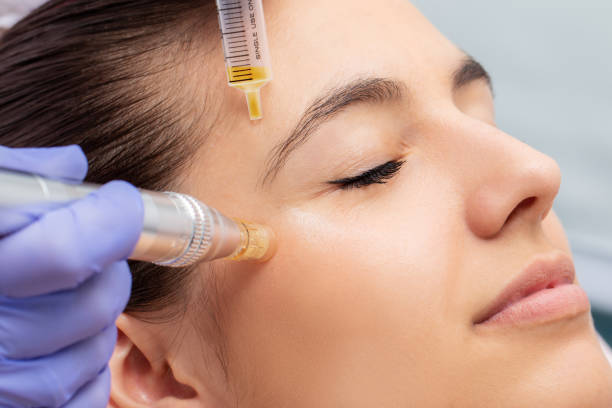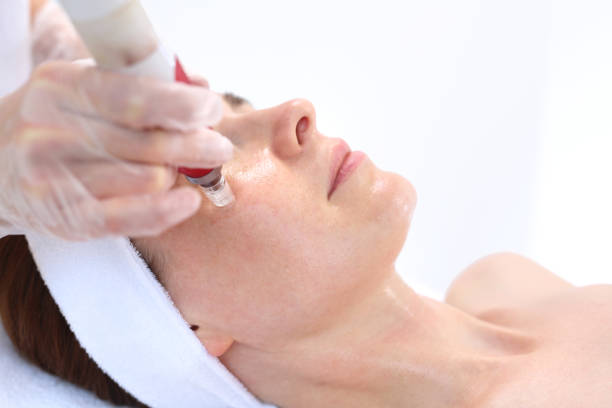Microneedling, a cosmetic procedure involving the use of small needles to create controlled micro-injuries to the skin, is generally not recommended for use on the eyelids due to the sensitive nature of the skin in that area and the potential risks involved. The skin around the eyes is thin and delicate, making it more susceptible to damage and complications from microneedling.
Microneedling around the eyelids can lead to irritation, swelling, bruising, and even injury to the eye itself. Additionally, there’s a risk of introducing bacteria or other pathogens into the eye area, which could lead to infections or other serious complications.
It’s important to consult with a qualified dermatologist or cosmetic surgeon before undergoing any cosmetic procedure, especially in sensitive areas like the eyelids. They can assess your individual situation and recommend the most appropriate treatment options for achieving your desired results while minimizing risks to your health and safety.

What depth should microneedling eyelids be?
Microneedling on the eyelids is generally not recommended due to the delicate nature of the skin in that area and the potential risks involved. However, if a dermatologist or cosmetic surgeon determines that microneedling on the eyelids is appropriate for your specific situation, they would typically use very shallow needle depths, if any, due to the thinness and sensitivity of the skin.
In such cases, the depth of microneedling on the eyelids would likely be minimal, possibly less than 0.25 millimeters. The goal would be to provide some stimulation to the skin without causing significant injury or discomfort.
It’s crucial to consult with a qualified and experienced professional before considering microneedling on the eyelids or any other sensitive area. They can evaluate your skin condition, discuss your goals, and recommend the safest and most effective treatment options for you.
How can I tighten the skin on my upper eyelids?
Tightening the skin on the upper eyelids can be achieved through various non-invasive or minimally invasive methods. Here are some options to consider:
- Topical treatments: Look for eye creams or serums containing ingredients such as retinol, peptides, vitamin C, and hyaluronic acid. These ingredients can help improve skin elasticity and firmness over time.
- Radiofrequency (RF) therapy: RF treatments deliver controlled heat energy into the skin, stimulating collagen production and tightening loose skin. This non-invasive procedure can help improve the appearance of sagging eyelids.
- Ultherapy: This is a non-invasive ultrasound treatment that stimulates collagen production and tightens loose skin. Ultherapy can be effective for lifting and tightening the skin on the upper eyelids.
- Fractional laser resurfacing: Fractional laser treatments target the deeper layers of the skin, stimulating collagen production and improving skin texture and tightness. It can help tighten loose skin on the eyelids and reduce the appearance of wrinkles.
- Botox: While primarily known for its use in reducing wrinkles, Botox injections can also be used to lift the eyebrows slightly, which can help tighten the skin on the upper eyelids.
- Chemical peels: Chemical peels can improve skin texture and tighten loose skin by promoting exfoliation and collagen production. Superficial peels are typically safe for use around the eyes.
- Microneedling with radiofrequency (RF): This combines microneedling with RF energy to stimulate collagen production and tighten the skin. It can be effective for treating sagging eyelids.
Before undergoing any treatment, it’s essential to consult with a qualified dermatologist or cosmetic surgeon who can assess your individual concerns and recommend the most suitable treatment option for you. They can also discuss the potential risks, benefits, and expected outcomes of each treatment.
